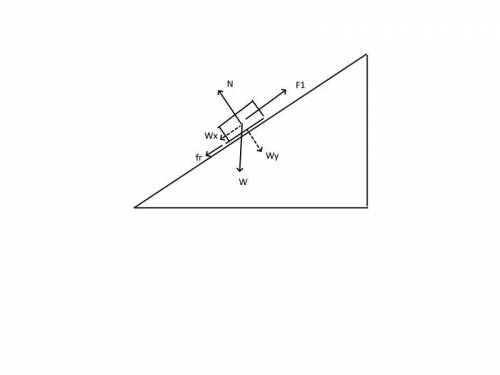*The work of the Normal (N) y Wy are zero answer a
*The work of the applied force (F1) is positive answer c
*The work of the friction force (fr) is negative, answer b
*The work of the Wy isnegative, answer d
Explanation:
In this exercise it is asked to identify the type of work, unfortunately the diagram cannot be seen, but in the attached we can see the diagram of a body moving upward on an inclined plane, the existing forces are shown.
As the body moves at constant speed the accelerations are zero. Let's look for the job that is defined
W = F. d
W = F d cos θ
where the dot represents the dot product and the bold letters are vectors.
* The work of the Normal (N) and the y component of the weight (Wy) are zero because they are perpendicular to the motion
answer a
* The work of the applied force (F1) is positive because it is in the same direction of motion
W = F1 Δx
answer c
* The work of the friction force (fr) is negative because the force in the displacement have opposite directions
W = -fr Δx
answer b
* the work the x component of the weight (Wx) in this case is negative
answer d
